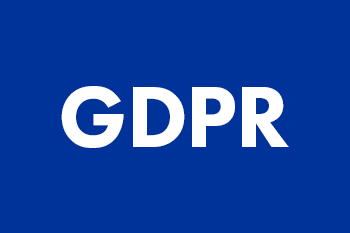It is popularly believed that the nano industry has entered the mass market and has undergone “consumerization” within the EU. This means that nanotechnology can no longer be considered part of a highly localized niche market, but has evolved from laboratories into being manufactured commercially, and has finally reached the consumers. Don’t believe me? Check out the online inventory of nano-based products, Nanodatabase (www.nanodb.dk). At the end of 2020, a whopping 5000 tangible nano based products were listed in this database! These do not include products that are under development, but products that can be ordered online and is available for purchase anywhere in the EU!
For a technology that only became popular at the end of the 19th century, this is an extremely large number of products. Interestingly, "nanotechnology" was first mentioned at the strategic level of the EU in the 5th Research Framework Program (FP5) for the period 1998-2002 (European Parliament and Council, 1999). At that time, the EU was just beginning to formulate a possible inclusion and prioritization of nanotechnology in its research and development framework. Since then, the EU market has experienced a boom in nanotechnology, with exponential and radical growth in nanomaterials research and development. Frankly, it has been quite difficult for regulators and policy makers to keep up with the growing demand for nanomaterials. So the obvious question we're all asking is, "How do you regulate something that you can barely see while taking every industry by storm?" We are talking about a time when electron microscopy had not yet reached the resolution and precision it has today. Generalization was not possible because nanoforms of the same substance had different properties and had previously unknown effects on the environment and human health.
From what I have gathered as a newcomer to the field of regulatory methods, the EU has deliberately adopted a rather flexible and stretching approach of "soft regulation" with regard to the manufacture, use and import of nanomaterials, leaving plenty of room for amendments and additions to the existing regulatory framework. This was particularly important in the case of nanotechnology, as there is still much that is unknown about it, whether in terms of characterization tools or its safety. The European Commission (EC) has been particularly dynamic in regulating nanomaterials, proactively trying to bridge the gap between making nanotechnology consumer-friendly and developing validated criteria (analytical, scientific, and practical) for effective and sustainable legislation.
The first steps towards regulating nanomaterials in the EU were taken when the European Commission identified the need for an action plan for the safe and responsible development and use of nanomaterials in 2005. Following the recommendation of this action plan, nanomaterials were regulated under REACH (Registration, Evaluation, Authorization and Restriction of Chemicals) starting in 2006, like other chemicals and mixtures. However, it was not until 2008 that the European Commission pushed for a risk assessment of nanomaterials in a communication. This communication formed the basis for Regulation (EC) No. 1272/2008 on nanospecific classification, labeling and packaging (CLP) of hazardous substances and mixtures. However, the term nanomaterial was not explicitly mentioned in REACH, and nanomaterials fell under the definition of "substances." This led to confusion among registrants, and nanoforms, which primarily did not meet the minimum quantity requirement for substance registration under REACH, remained largely unregistered. In addition, analytical techniques for risk assessment were often economically arduous, and without a "legal obligation" to register, this was seen as a waste of resources.
The European Commission resolved this ambiguity to some extent by recommending a definition for the term "nanomaterial" in 2011. This recommendation was based on the ISO terminology for "nanomaterial," a reference report from the European Commission's Joint Research Centre (JRC), an opinion from the Scientific Committee on Emerging and Newly Identified Health Risks (SCENIHR), and 195 contributions received during the public consultation. It was the first step in ensuring a "Harmonization of terminology in the various legal texts". However, this definition was based solely on the particle size distribution of the material. Furthermore, although the European Commission provided a clear identification criterion for a "nanomaterial," it was often not easy to measure nanomaterials, making the implementation of this classification scheme rather cumbersome. The lack of validated characterization techniques, reference materials, and explicit guidelines led to uncertainties in the proper regulation of nanomaterials. Complete and transparent registration of nanomaterials was once again not achieved. In the meantime, sector-specific regulations and definitions for nanomaterials entered into force as part of the Food Additives Regulation (2008) and the Cosmetics Regulation (2009).
In 2012, the EC again made changes to the definition of "nanomaterial" and decided that, in the absence of a generally applicable guideline for risk assessment, a case-by-case approach could be adopted. The EC also recognized the need for nano-specific amendments to the REACH Annexes to legally implement these regulations. However, a registration requirement for nanoforms was again not imposed. Also in 2012, "nanomaterials" were included in the biocide regulations.
Finally, in 2018, the EU made amendments to REACH Annexes I, III, VI, VII, VIII, IX, X, XI, and XII, which took effect on January 1, 2020. Under the revised REACH requirements, all nanoforms must be registered, with a focus on chemical safety assessment. Nanoforms of substances must additionally be identified and characterized as part of the registration process. Most importantly, risks to the environment and human health must be assessed using OECD-mandated guidelines that are either in place or being developed. Further refinement of the guidelines may be required as industry and its knowledge base continue to grow, but as always, the EU has set high standards when it comes to maintaining the quality of human health and the environment. More on the latest REACH requirements in our future blogs! Follow the #nNAnoRegulations blogs for more details and information!
For more information on nanomaterial testing guidelines and registration requirements, please contact me by phone: 06346/9661490 or by email: menon@necotox.de




